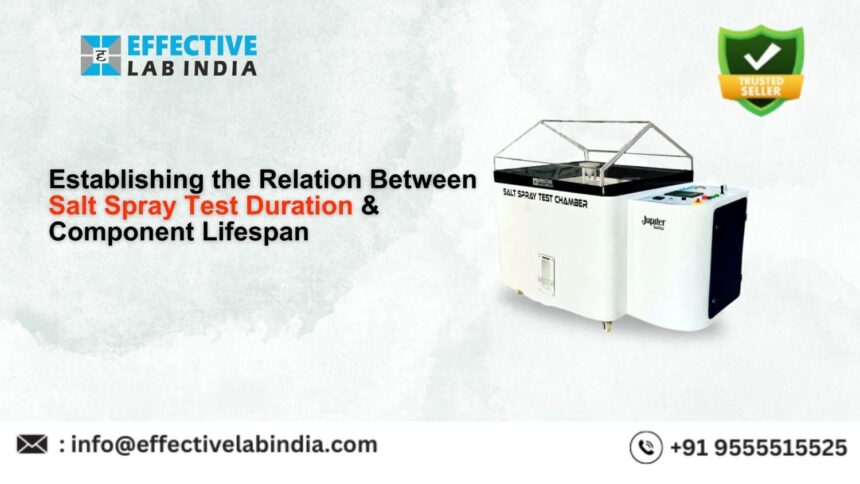The salt spray test effectively evaluates a material’s corrosion resistance. This is important for industries such as automotive, aerospace, and marine. They need to know how materials perform in corrosive environments. But how does the test duration compare to the product’s actual use? Let us examine this.
Contents
What is the Salt Spray Test?Why is Salt Spray Testing Important?Understanding Corrosion and its ImpactHow Salt Spray Testing Simulates Real-World ConditionsFactors Affecting Corrosion in Salt Spray TestsRelation Between Salt Spray Test Duration and Real-Life CorrosionFactors that Can Alter Test OutcomesBest Practices for Using Salt Spray TestsComparing Salt Spray Testing to Other Corrosion TestsHow to Improve Corrosion Resistance in ComponentsConclusion: Establishing a Strong Correlation
What is the Salt Spray Test?
The salt spray test, or the salt fog test, is a standardized test method that simulates a corrosive environment. This involves exposing the material to a salt-laden mist in a controlled chamber designed to accelerate corrosion. By doing this, manufacturers can determine how long their products will withstand exposure to corrosive environments such as coastal areas or industrial sites.Why is Salt Spray Testing Important?
Salt spray testing is necessary to predict the durability of materials in harsh environments. This allows manufacturers to monitor the durability of coatings layer, metals, and other protective materials. Knowing the consequences helps companies avoid failures that could pose safety risks or costly repairs.Understanding Corrosion and its Impact
1. What is rust? Corrosion is a natural process in which a metal deteriorates due to chemical reactions with its environment. This metal is generally exposed to oxygen and water, causing rust to form and oxidize. 2. Types of Corrosion in Metals There are several types of corrosion, e.g.- Uniform corrosion: Evenly affects the surface of the material.
- Pitting Corrosion: Small areas of metal are affected.
- Galvanic corrosion: occurs when two metals come into contact in the presence of an electrolyte.
How Salt Spray Testing Simulates Real-World Conditions
Salt spray testing accelerates corrosion by creating high humidity in the salt spray chamber. While it can take years for visible damage to emerge from real-world manifestations, salt spray testing can stabilize this for days or weeks. This early testing helps to understand potential long-term effects without having to wait years for natural corrosion to occur.Factors Affecting Corrosion in Salt Spray Tests
Several factors influence the rate of degradation of a salt spray test: 1. The temperature The temperature of the salt spray test chamber affects the rate of degradation. Higher temperatures generally accelerate corrosion. 2. Salt content The amount of added salt plays an important role. Higher levels can lead to more rapid and severe deterioration. 3. Humidity Levels Corrosion is also influenced by the moisture content of the test area. More humidity means more moisture, which can accelerate corrosion.Relation Between Salt Spray Test Duration and Real-Life Corrosion
1. Why the Correlation Isn’t Direct While salt spray testing can provide insight into the material’s durability, the relationship between test duration and real-life corrosion is not always straightforward. Real-world conditions, such as temperature fluctuations, varying humidity, and various additives, can all alter the rate of degradation. 2. Establishing the Relation: A Step-by-Step Approach Follow these steps to establish a relation between the salt spray test duration with the actual corrosion resistance of the piece.- Start with a quick test: Use a salt spray test to simulate complex situations.
- Measure Damage: Look for damage over time.
- Compare with field data: At the same time, examine how the same data performs in real-world situations.
- Create a correlation model: Use data from two tests to estimate product life under real-world conditions based on the results of the salt spray test.
Factors that Can Alter Test Outcomes
Several variables can affect salt spray test outcomes, including:- The quality of the coating
- Differences in test chamber setup
- Variations in the material’s composition



